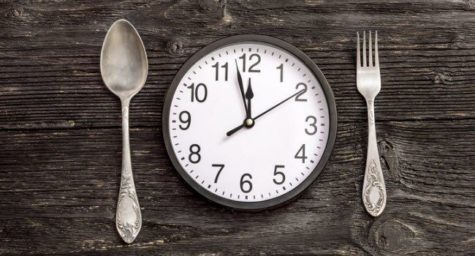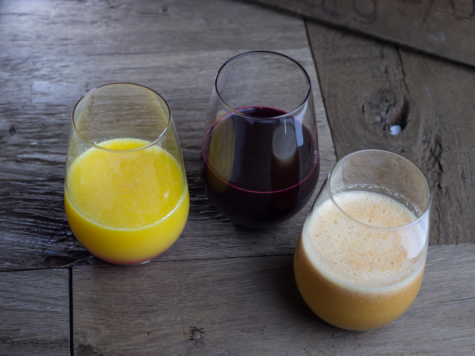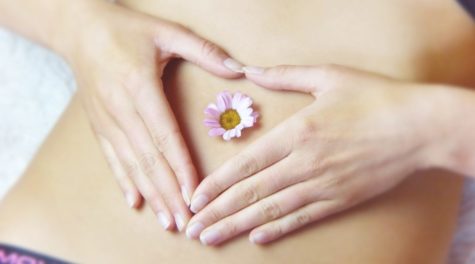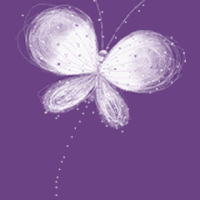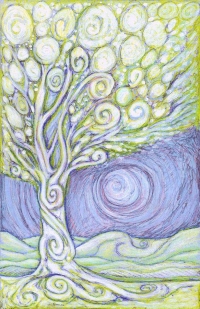Fasting
Raw Juice Therapy
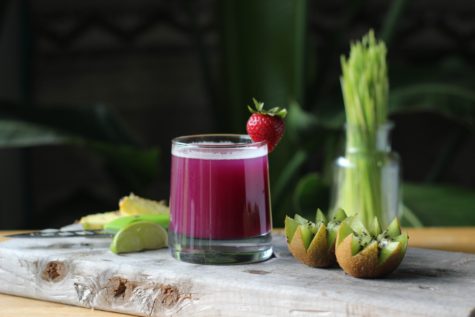
Raw juice therapy is a method of treatment of disease through an exclusive diet of juices of fruits and vegetables. It is also known as juice fasting. It is the most effective way to restore health and rejuvenate the body.
During raw juice therapy, the eliminative and cleansing capacity of the organs of elimination, namely lungs, liver, kidneys and the skin, is greatly increased and masses of accumulated metabolic waste and toxins are quickly eliminated. It affords a physiological rest to the digestive and assimilative organs.
After the juice fasting or raw juice therapy, the digestion of food and the utilization of nutrients is vastly improved. An exclusive diet of raw juices of fruits and vegetables results in much faster recovery from diseases and more effective cleansing and regeneration of the tissues than the fasting on pure water.
Dr. Ragnar Berg, a world-renowned authority on nutrition and biochemistry observes:
“During fasting the body burns up and excretes huge amounts of accumulated wastes. We can help this cleansing process by drinking alkaline juices instead of water while fasting.
I have supervised many fasts and made extensive examinations and tests of fasting patients, and I am convinced that drinking alkali-forming fruit and vegetable juices, instead of water, during fasting will increase the healing effect of fasting. Elimination of uric acid and other inorganic acids will be accelerated. And sugars in juices will strengthen the heart.
Juice fasting is, therefore, the best form of fasting. ”
As juices are extracted from plants and fruits, they process definite medicinal properties. Specific juices are beneficial in specific conditions. Besides specific medicinal virtues, raw fruit and vegetable juices have an extraordinary revitalizing and rejuvenative effect on all the organs, glands and functions of the body.
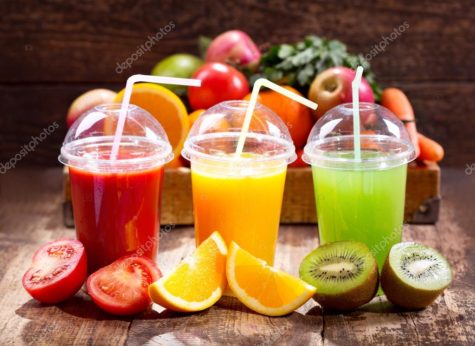
Favorable Effects
The favorable effect of raw juices in the treatment of disease is attributed to the following facts : Raw juices of fruits and vegetables are extremely rich in vitamins, minerals, trace elements, enzymes and natural sugars. They exercise beneficial effect in normalizing all the body functions. They supply needed elements for the body’s own healing activity and cell regeneration, thereby speeding the recovery.
- The juices extracted from raw fruits and vegetables require no digestion and almost all their vital nutrients are assimilated directly in the bloodstream.
- Raw juices are extremely rich in alkaline elements. This is highly beneficial in normalizing acid-alkaline balance in the blood and tissues as there is over-acidity in most conditions of ill-health.
- Generous amounts of easily assimilable organic minerals in raw juices especially calcium, potassium and silicon help in restoring biochemical and mineral balance in the tissues and cells, thereby preventing premature ageing of cells and disease.
- Raw juices contain certain natural medicines, vegetal hormones and antibiotics. For instance, string beans are said to contain insulin-like substance. Certain hormones needed by the pancreas to produce insulin are present in cucumber and onion juices. Fresh juices of garlic , onions, radish and tomatoes contain antibiotic substances.

Precautions
Certain precautions are, however, necessary in adopting an exclusive diet of raw juices. Firstly, all juices should be made fresh immediately before drinking. Canned and frozen juices should not be used. It will be advisable that one should have one’s own juicer for extracting fresh juices.
Secondly, only fresh ripe fruits and vegetables, preferably organically grown, should be used for extraction of juices.
Thirdly, only as much juice as needed for immediate consumption should be extracted. Raw juices oxidize rapidly and lose their medicinal value in storage, even under refrigeration.
Fourthly, the quality of the juices has a distinct bearing on the results obtained. In case of incomplete extraction of juices, their effective power is proportionately reduced due to the absence of the vitamins and enzymes which are left behind in fiber and the pulp.
Finally, if juices are too sweat they should be diluted in water on 50 : 50 basis or mixed with other less sweet juices. This is especially important in some specific conditions such as diabetes, hypoglycemia, arthritis and high blood pressure.
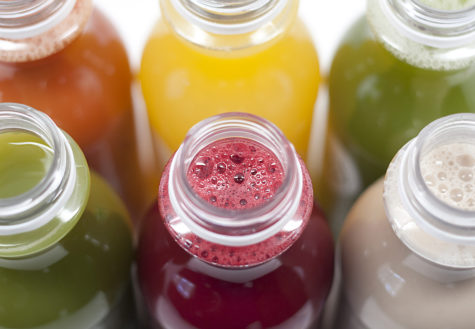
The Six Main Types of Juices
Fruit and vegetable juices may be divided into six main types. These are :
- Juices from sweet fruits such as prunes and grapes
- Juices from sub-acid fruits like apple, plum, pear, peach, apricot and cherry
- Juices from acid fruits like orange, lemon, grapefruit, strawberry and pineapple
- Juices from vegetable fruits, namely, tomato and cucumber
- Juices from green leafy vegetables like cabbage, celery, lettuce, spinach, parsley and watercress
- Juices from root vegetables like beetroot, carrot, onion, potato and radish. Generally speaking, fruit juices stir up toxins and acids in the body, thereby stimulating the eliminative processes.
Vegetable juices, on the other hand, soothe the jaded nerves and work in a much milder manner. They carry away toxic matter in a gentle way. Owing to their differing actions fruit and vegetable juices should not be used at the same time or mixed together. It is desirable to use juices individually. In any case not more than three juices should be used in any one mixture.
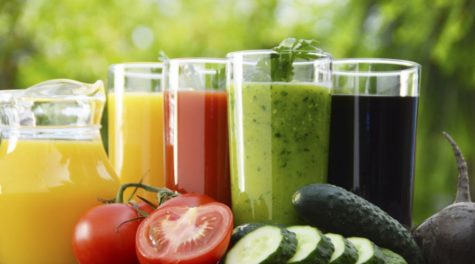
Rules For Mixing Juices
The following broad rules apply when using mixtures of juices. Juices from sweet fruits may be combined with juices of sub-acid fruits, but not with those of acid fruits, vegetable fruits or vegetables.
- Juices from sub-acid fruits may be combined with juices of sweet fruits, or acid fruits, but not with other juices.
- Juices from acid fruits may be combined with those of sub-acid fruits or vegetable fruits, but not with other juices.
- Juices from vegetable fruits may be combined with those of acid fruits or of green leafy vegetables, but not with other juices.
- Juices from green leafy vegetables may be combined with those of vegetable fruits or of the root vegetable, but not with other juices.
- Juices from root vegetables may be combined with those of green leafy vegetables, but not with other juices. A proper selection of juices in treating a particular ailment is very essential.
Thus, for instance, juices of carrot, cucumber, cabbage and other vegetables are very valuable in asthma, arthritis and skin disease, but juices of orange and mosambi aggravate their symptoms by increasing the amount of mucus.
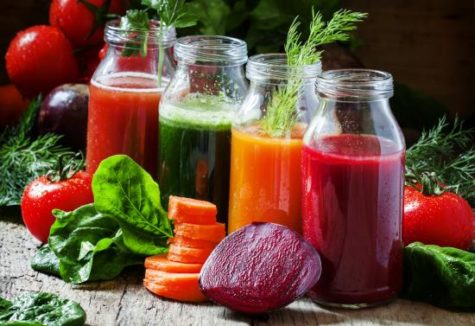
Treatment of Diseases
Some common ailments and fruit and vegetable juices found beneficial in their treatment are mentioned below :
- Acidity : Grapes, orange, mosambi, carrot and spinach.
- Acne : Grapes, pear, plum, tomato, cucumber, carrot, potato and spinach.
- Allergies : Apricot, grapes, carrot, beet and spinach.
- Arteriosclerosis : Grapefruit, pineapple, lemon, celery, carrot, lettuce, and spinach.
- Anemia : Apricot, prune, strawberry, red grape, beet, celery, carrot and spinach.
- Arthritis : Sour cherry, pineapple, sour apple, lemon, grapefruit, cucumber, beet, carrot, lettuce and spinach.
- Asthma : Apricot, lemon, pineapple, peach, carrot, radish and celery.
- Bronchitis : Apricot, lemon, pineapple, peach, tomato, carrot, onion and spinach.
- Bladder Ailments : Apple, apricot, lemon, cucumber, carrot, celery, parsley and watercress.
- Colds : Lemon, orange, grapefruit, pineapple, carrot, onion, celery and spinach.
- Constipation : Apple, pear, grapes, lemon, carrot, beet, spinach and watercress.
- Colitis : Apple, apricot, pear, peach, pineapple, papaya, carrot, beet, cucumber and spinach.
- Diabetes : Citrus fruits, carrot, celery, lettuce and spinach.
- Diarrhea : Papaya, lemon, pineapple, carrot and celery.
- Eczema : Red grapes,carrot, spinach, cucumber and beet.
- Epilepsy : Red grapes, figs, carrot, celery and spinach.
- Eye Disorders : Apricot ,tomato, carrot, celery, parsley and spinach.
- Gout : Red sour cherries, pineapple, tomato, cucumber, beet, carrot, celery and spinach.
- Halitosis : Apple, grapefruit, lemon, pineapple, tomato, carrot, celery and spinach.
- Headache : Grapes, lemon, carrot, lettuce and spinach.
- Heart Disease : Red grapes, lemon, cucumber, carrot, beet and spinach.
- High blood pressure : Grapes, orange, cucumber, carrot and beet.
- Influenza : Apricot, orange, lemon , grapefruit, pineapple, carrot, onion and spinach.
- Insomnia : Apple, grapes, lemon, lettuce , carrot and celery.
- Jaundice : Lemon, grapes, pear, carrot, celery, spinach, beet and cucumber.
- Kidney Disorders : Apple, orange, lemon, cucumber, cucumber,carrot, celery, parsley and beet.
- Liver ailments : Lemon, papaya, grapes, carrot, tomato, beet and cucumber.
- Menstrual Disorders :Grapes, prunes, cherry, spinach, lettuce turnips and beet.
- Menopausal Symptoms : Fruits and Vegetables in season.
- Neuritis : Orange, pineapple, apple, carrot and beet.
- Obesity : Lemon, grapefruit, orange, cherry, pineapple, papaya, tomato, beet, cabbage, lettuce, spinach and carrot.
- Piles : Lemon, orange, papaya, pineapple, carrot, spinach, turnip and watercress.
- Prostate Troubles : All fruit juices in season, carrot, asparagus, lettuce and spinach.
- Psoriasis : Grapes, carrot, beet, and cucumber.
- Rheumatism : Grapes, orange, lemon, grapefruit, tomato, cucumber, beet, carrot and spinach.
- Stomach Ulcers : Apricot, grapes, cabbage and carrot.
- Sinus Trouble : Apricot, lemon, tomato, carrot, onion and radish.
- Sore Throat : Apricot, grapes, lemon, pineapple, prune, tomato, carrot and parsley.
- Tonsillitis : Apricot, lemon, orange, grapefruit, pineapple, carrot, spinach and radish.
- Varicose Veins : Grapes, orange, plum, tomato, beetroot carrot and watercress.
When on a raw juice therapy, the prescribed juice should be drunk every three hours. One can thus take juices five to six times a day. A glass of water mixed with lemon juice and 20 to 30 grams of honey may be taken first thing in the morning on arising. Thereafter, the prescribed juice may be taken at three-hourly intervals.
The quantity of juice on each occasion may be 250 ml on the first day. This quantity may be increased by 50 ml each succeeding day till one takes 600 ml on each occasion. The juice diet can be continued for 30 to 40 days without any ill-effects.
The patient should take adequate rest during the raw juice therapy. Raw juices act as a cleansing agent and start eliminating toxins and morbid matter from the system immediately. This often results in symptoms such as pain in the abdomen, diarrhea, loss of weight, headache, fever, weakness, sleeplessness and bad breath.
These reactions, which are part of the cleansing process, should not be suppressed by the use of drugs. They will cease when the body is able to expel all toxins. After the raw juice therapy, the return to normal balanced diet should be gradual, and in stages. In the beginning, two juice meals may be replaced by milk and fruits. Then gradually juice meals may be substituted by a balanced-diet.
Fasting – The Master Remedy
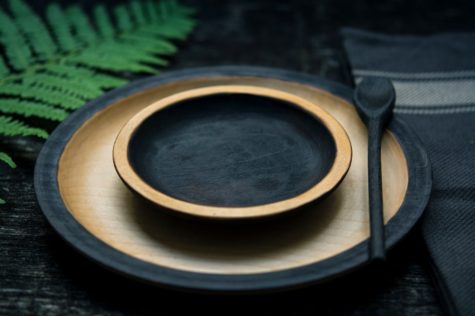
Fasting refers to complete abstinence from food for a short or long period for a specific purpose. The word is derived from the old English, ‘feastan’ which means to fast, observe, be strict. Fasting is nature’s oldest, most effective and yet least expensive method of treating disease. It is recognized as the cornerstone of natural healing. Dr. Arnold Eheret, the originator of the mucus-less diet healing system, describes it as ” nature’s only universal and omnipotent remedy of healing” and “nature’s only fundamental law of all healing and curing. ”
The practice of fasting is one of the most ancient customs. It is followed in almost every religion. The Mohammedan, the Buddhists, the Hindus and many others have their periods of strict fasting. The saints of medieval times laid great stress on this method.
Fasting in disease was advocated by the school of natural philosopher, Asclepiades, more than two thousand years ago. Throughout medical history, it has been regarded as one of the most dependable curative methods. Hippocrates, Galen, Paracelsus and many other great authorities on medicine prescribed it. Many noted modern physicians have successfully employed this system of healing in the treatment of numerous diseases.
The common cause of all diseases is the accumulation of waste and poisonous matter in the body which results from overeating. The majority of persons eat too much and follow sedentary occupations which do not permit sufficient and proper exercise for utilization of this large quantity of food. This surplus overburdens the digestive and assimilative organs and clogs up the system with impurities or poisons. Digestion and elimination become slow and the functional activity of the whole system gets deranged.
The onset of disease is merely the process of ridding the system of these impurities. Every disease can be healed by only one remedy – by doing just the opposite of what causes it, that is, by reducing the food intake or fasting.
By depriving the body of food for a time ,the organs of elimination such as the bowels, kidneys, skin and lungs are given opportunity to expel, unhampered, the overload of accumulated waste from the system. Thus, fasting is merely the process of purification and an effective and quick method of cure. It assists nature in her continuous effort to expel foreign matter and disease producing waste from the body, thereby correcting the faults of improper diet and wrong living. It also leads to regeneration of the blood as well as the repair and regeneration of the various tissues of the body.
Duration
The duration of the fast depends upon the age of the patient, the nature of the disease and the amount and type of drugs previously used. The duration is important, because long periods of fasting can be dangerous if undertaken without competent professional guidance. It is, therefore, advisable to undertake a series of short fasts of two to three days and gradually increase the duration of each succeeding fast by a day or so.
The period, however, should not exceed a week of total fasting at a time. This will enable the chronically sick body to gradually and slowly eliminate toxic waste matter without seriously affecting the natural functioning of the body. A correct mode of living and a balanced diet after the fast will restore vigor and vitality to the individual.
Fasting is highly beneficial in practically all kinds of stomach and intestinal disorders and in serious conditions of the kidneys and liver. It is a miracle cure for eczema and other skin diseases and offers the only hope of permanent cure in many cases. The various nervous disorders also respond favorably to this mode of treatment.
Fasting should, however, not be restored to in every illness. In cases of diabetes, advanced stages of tuberculosis, and extreme cases of neurasthenia, long fasts will be harmful. IN most cases, however , no harm will accrue to fasting patients, provided they take rest, and are under proper professional care.
Fasting – Methods
The best, safest and most effective method of fasting is juice fasting. Although the old classic form of fasting was a pure water fast, most of the leading authorities on fasting today agree that juice fasting is far superior to a water fast.
According to Dr. Rangar Berg, the world -famous authority on nutrition, “During fasting the body burns up and excretes huge amounts of accumulated wastes. We can help this cleansing process by drinking alkaline juice instead of water while fasting … Elimination of uric acid and other inorganic acids will be accelerated. And sugars in juices will strengthen the heart … juice fasting is, therefore, the best form of fasting. ”
Vitamins, minerals, enzymes and trace elements in fresh, raw vegetable and fruit juices are extremely beneficial in normalizing all the body processes. They supply essential elements for the body’s own healing activity and cell regeneration and thus speeding the recovery. All juices should be prepared from fresh fruit immediately before drinking. Canned or frozen juices should not be used.
A precautionary measure which must be observed in all cases of fasting is the complete emptying of the bowels at the beginning of the fast by enema so that the patient is not bothered by gas or decomposing matter formed from the excrement remaining in the body. Enemas should be administered at least every alternate day during the fasting period. The patient should get as much fresh air as possible and should drink plain lukewarm water when thirsty. Fresh juices may be diluted with pure water. The total liquid intake should be approximately six to eight glasses.
A lot of energy is spent during the fast in the process of eliminating accumulated poisons and toxic waste materials. It is, therefore, of utmost importance that the patients gets as much physical rest and mental relaxation as possible during the fast. In cases of fasts in which fruit juices are taken, especially when fresh grapes, oranges or grapefruit are used exclusively, the toxic wastes enter the blood -stream rapidly, resulting in an overload of toxic matter, which affects normal bodily functions. This often results in dizzy spells, followed by diarrhea and vomiting. If this physical reaction persists, it is advisable to discontinue the fast and take cooked vegetables containing adequate roughage such as spinach and beets until the body functioning returns to normal.
The overweight person finds it much easier to go without food. Loss of weight causes no fear and the patient’s attitude makes fasting almost a pleasure. The first day’s hunger pangs are perhaps the most difficult to bear. The craving for food will, however, gradually decrease as the fast progresses. Seriously sick persons have no desire for food and fasting comes naturally to them. The simplest rule is to stop eating until the appetite returns or until one feels completely well.
Only very simple exercises like short walks may be undertaken during the fast. A warm water or neutral bath may be taken during the period. Cold baths are not advisable. Sun and air baths should be taken daily. Fasting sometimes produces a state of sleeplessness which can be overcome by a warm tub bath, hot water bottles at the feet and by drinking one or two glasses of hot water.
Benefits
There are several benefit of fasting. During a long fast, the body feeds upon its reserves. Being deprived of needed nutrients, particularly of protein and fats, it will burn and digest its own tissues by the process of autolysis or self-digestion. But it will not do so indiscriminately. The body will first decompose and burn those cells and tissues which are diseased, damaged, aged or dead. The essential tissues and vital organs, the glands, the nervous system and the brain are not damaged or digested in fasting.
Here lies the secret of the effectiveness of fasting as a curative and rejuvenative method. During fasting, the building of new and healthy cells are sped up by the amino acids released from the diseased cells. The capacity of the eliminative organs, that is, lungs, liver, kidneys and the skin is greatly increased as they are relieved of the usual burden of digesting food and eliminating the resultant wastes. They are, therefore, able to quickly expel old accumulated wastes and toxins.
Fasting affords a physiological rest to the digestive, assimilative and protective organs. As a result, the digestion of food and the utilization of nutrients is greatly improved after fasting. The fast also exerts a normalizing, stabilizing and rejuvenating effect on all the vital physiological, nervous and mental functions.
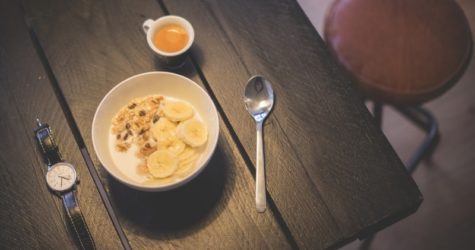
Breaking the Fast
The success of the fast depends largely on how it is broken. This is the most significant phase. The main rules for breaking the fast are: do not overeat, eat slowly and chew your food thoroughly; and take several days for the gradual change to the normal diet. If the transition to eating solid foods is carefully planned, there will be no discomfort or damage. The patient should also continue to take rest during the transition period. The right food after a fast is as important and decisive for proper results as the fast itself.
